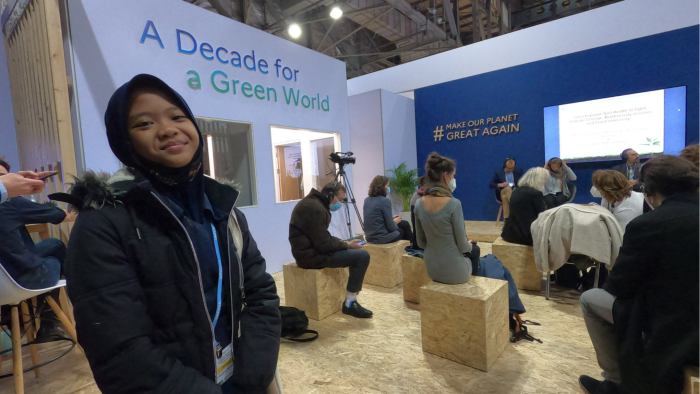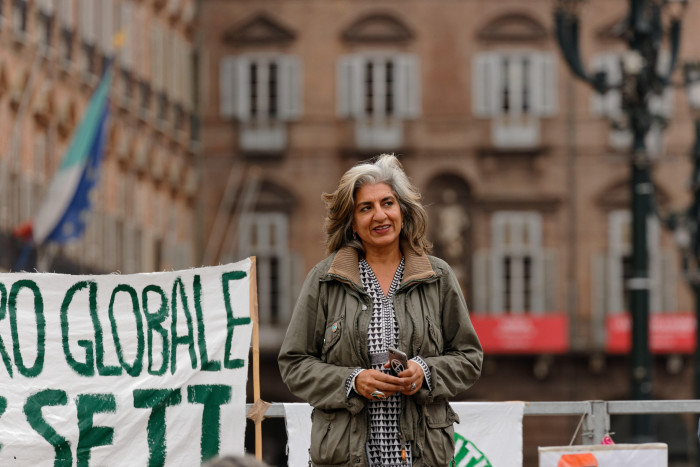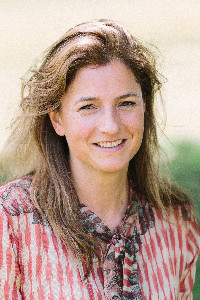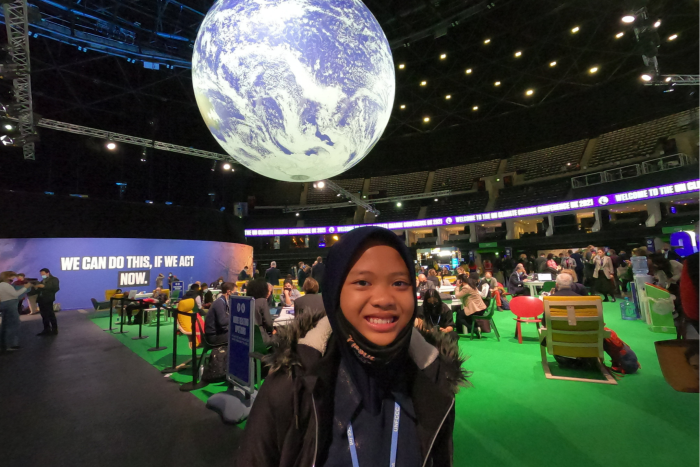Young women push for greater representation in the climate debate

Roula Khalaf, Editor of the FT, selects her favourite stories in this weekly newsletter.
“Too male, pale and stale,” was how Mary Robinson, former president of Ireland, described last year’s international climate negotiations at the Conference of the Parties (COP) in Glasgow.
“Gender” first appeared in the COP process in the text approved at the end of the seventh annual climate summit, in Marrakesh in 2001. But, 19 conferences later, the goal of “gender balance” — in either the UN bodies working on climate change, or in the delegations that negotiate the agreements aimed at reducing emissions — remains elusive.
Women were far from equally represented at COP26 and the balance is unlikely to shift radically at this year’s meeting in Egypt.
Behind the scenes, however, women have laid the groundwork — and a younger generation is coming of age, with an unwillingness to be overshadowed by old boys’ networks.
Environmental lawyer and climate activist Farhana Yamin started working on international climate negotiations in 1991 — before the first COP was held in Berlin in 1995. Aside from Angela Merkel, then Germany’s environment minister and COP president, the meetings were “totally male dominated”, recalls Yamin. “The amount of overt sexism and discrimination was horrendous.”

It was Yamin who got gender on to the COP agenda by taking the floor in Marrakesh and demonstrating to negotiators how well-qualified women had been passed over for top positions. Her intervention led to an agreement to “enhance the participation of women at all levels of decision making related to climate change”. It was not until COP18 in Doha in 2012, however, that the goal of “gender balance” in climate negotiations became official. But, since then, progress has been slow.
Annual reports published by the UN Framework Convention on Climate Change highlight a “persistent lack of progress” and the “urgent need” to improve the representation of women to achieve long-term climate goals.
More stories from this report
Female-led social enterprise tackles dysfunctional childcare system
Corporate abortion policies further complicate choices for female staff
How did your early work experiences shape your career?
Clare Smyth: ‘Pandemic teaches you how adaptable you are’
Expert witnesses: where are all the women?
Women occupied 39 per cent of positions in UN climate bodies in 2022, compared with 34 per cent in 2021, the most recent report shows. Yet, the number of women appointed as heads and deputy heads of national delegations dropped by 1 per cent last year, reversing a more positive trend since 2018.
In total, women made up 37 per cent of national delegations at COP26 but, even when present, female voices were often not heard, with women accounting for only 29 per cent of total speaking time. The chairs of the negotiating groups in Glasgow were also “predominantly men”, the report states and, during plenaries, women took up a mere 23.7 per cent of the speaking time.
Bianca Pitt was working in corporate finance in the UK, and pregnant with her first child, when she fully realised the risks climate change posed. After serving on the boards of various charities and, with her husband, creating the first chair of environmental sustainability at Insead business school, Pitt set up an informal women’s environmental network in 2020. The group found its calling when members realised that the UK’s COP26 team contained not one woman in a top position. The outcome was the She Changes Climate initiative.

In September this year, the campaign sent a letter, signed by 500 leaders from around the world, to the Egyptian presidency calling for a 50-50 split of men and women in the COP27 leadership team. In the longer term, the signatories want the UNFCCC to have a man and a woman as co-president of every climate summit. Until now, there have been only five female COP presidents.
Younger women, though, are already bringing change to the gender balance. At COP26, only in the 16 to 36 age bracket did women speak more than men in plenaries, taking 7.6 per cent of the time compared with 5.8 per cent (excluding chairs). A similar trend can be seen among youth climate activists, whose leaders are often female.
Fifteen-year-old Indonesian climate campaigner Nina Azzahra was one of the young attendees at COP26 in Glasgow. She says that at no stage did she feel at any disadvantage as a girl. “Girls are victims [of climate change],” Azzahra says, adding that girls are often responsible for collecting water in poorer countries and, as mothers, are on the frontline of managing food shortages. “If they want to say something, they will not be shy,” she insists.

A more diverse range of voices outside the main negotiations — including those of female climate activists and indigenous women — can create change inside the official processes by focusing public attention on what is happening, argues Nameerah Hameed, a policy specialist, who lives and works between Pakistan and the UK.
More notice should be taken of women from the Global South, such as Sherry Rehman, Pakistan’s climate minister, adds Hameed. Rehman has been clear about the link between global warming and the devastating floods suffered by her country.
“When we have a strong voice that understands the COP system and speaks well in the language of the Global North, that can be super powerful,” says Hameed.
Women at the Top Americas Summit
Join leaders from Qualcomm Incorporated, PepsiCo, Twitter and more at our Women at the Top Americas Summit. Taking place on November 14 at the Dream Downtown, New York, as well as online, our speakers will discuss how purposeful action from leaders can drive real change. Claim our limited 25% discount offer on our VIP in-person summit using promo code SPECIALREPORT22. Register for your in-person or digital pass today.
Comments